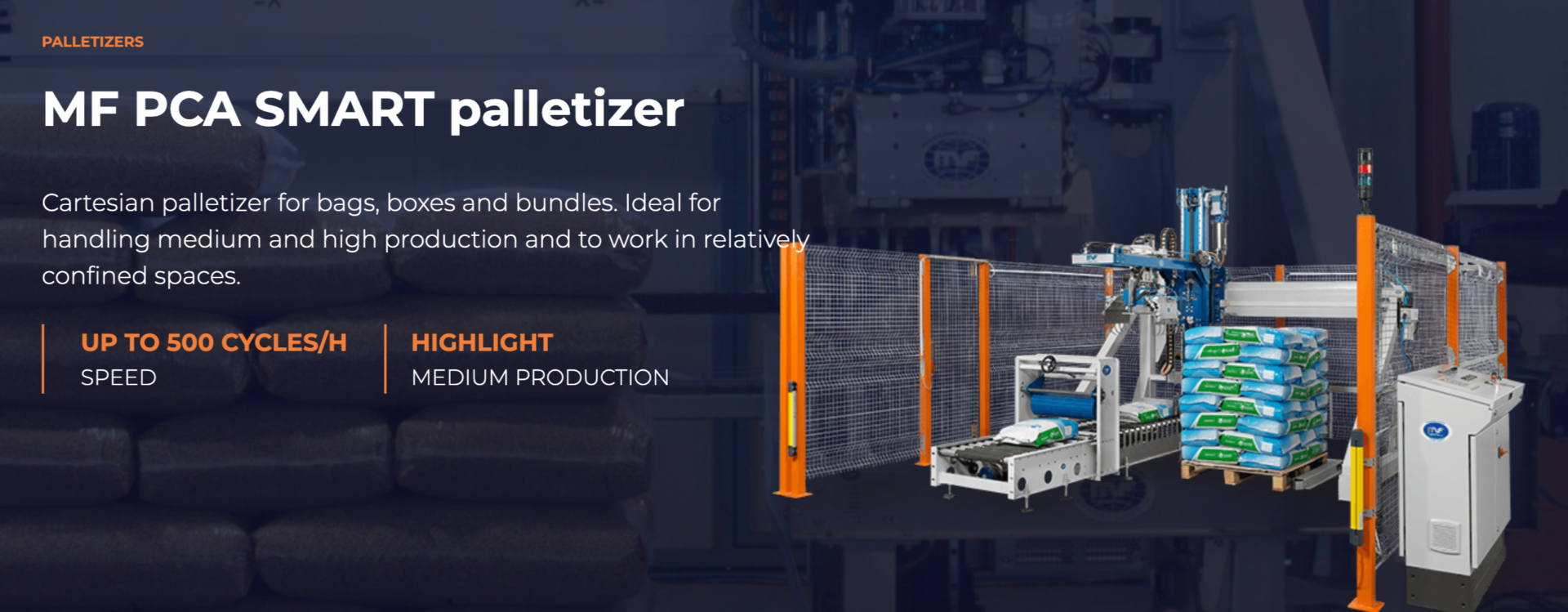Why You Should Use Mechanical Palletizers Instead of Manual Operators

In industries that require high volume packaging and shipping, palletizing/stacking goods onto pallets is a crucial step in the production process. Traditionally, this task has been handled by operatives. However, as technology evolves and efficiency becomes more vital than ever, mechanical palletizers are the preferred choice. Here’s why automating your palletizing operations is a smart investment.
1. Increased Efficiency and Consistency
Operatives, no matter how skilled, are subject to fatigue, distractions, and variability in performance. Mechanical palletizers, on the other hand, work at a consistent speed, 24/7 if needed. They can handle repetitive tasks with uniform accuracy, ensuring every pallet is stacked identically, this is important for shipping stability and warehouse storage.
2. Reduced Labor Costs
While the initial cost of a mechanical palletizer can be significant, it often pays for itself over time. Labor shortages and rising wages continue to challenge industries globally. By automating palletizing, businesses can reduce their reliance on manual labour, cut overtime expenses, and reallocate workers to more strategic tasks that require human oversight or problem-solving.
3. Improved Worker Safety
Manual palletizing is physically demanding, often leading to workplace injuries from lifting, twisting, and repetitive strain. Mechanical palletizers eliminate the need for operatives to perform these hazardous movements, significantly reducing injury related costs and downtime. A safer workplace also improves employee morale and retention.
4. Scalability and Flexibility
Modern mechanical palletizers are designed to be modular and programmable. Whether you’re stacking bags, boxes, or irregularly shaped products, the equipment can be adjusted to fit changing product lines or throughput requirements. This flexibility allows businesses to scale operations quickly without a complete overhaul.
5. Better Use of Floor Space
Palletizing by hand often requires more space to accommodate multiple operatives and safety zones. Mechanical palletizers are more compact and can be integrated into tight production lines. They can also be designed to stack more efficiently, maximizing vertical space and reducing the footprint of stored goods.
6. Real-Time Monitoring and Data Collection
Many modern palletizers come with sensors and software for real-time performance tracking, diagnostics, and predictive maintenance. This level of insight is impossible with manual labour and allows for proactive decision-making, reducing the likelihood of costly breakdowns or operational bottlenecks.
7. Future-Proofing Your Operations
As the logistics and manufacturing sectors continue to automate, businesses that lag behind risk falling out of competitiveness. Investing in a mechanical palletizer isn’t just about immediate gains, it’s about positioning your company for the future. Automation readiness is becoming a key differentiator in supply chain resilience and customer satisfaction.
For all of your palletising needs see our packaging portfolio then contact us: Contact
Comments are closed.